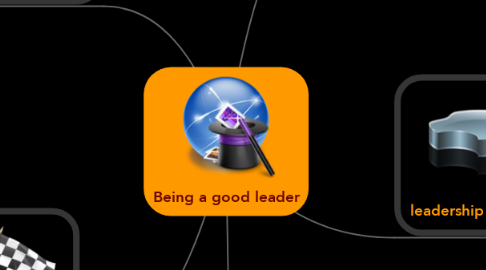
1. traits theory
1.1. Achievement drive
1.1.1. High level of effort
1.1.2. Initiative in completing tasks
1.2. Leadership motivation
1.2.1. Encourage others in tasks
1.2.2. Reach shared goals
1.3. Honesty
1.3.1. Trustworthy
1.3.2. Reliable
1.3.3. Open-minded thinking
1.4. Cognitive ability
1.4.1. Good judgement
1.4.2. Strong analytical thinking
1.4.3. Conceptually skilled
2. maturity levels
2.1. Level 1
2.1.1. Lack of knowledge, skills
2.1.2. Cannot work on their own
2.1.3. Needs to be pushed for tasks
2.2. Level 2
2.2.1. Willing to work on tasks
2.2.2. Don't have the skills to do it successfully
2.3. Level 3
2.3.1. Willing to help in tasks
2.3.2. Has skills
2.3.3. Lack of confidence on tasks
2.4. Level 4
2.4.1. Able to work independently
2.4.2. High confidence
2.4.3. Strong skills
2.4.4. Committed to tasks
3. leadership styles
3.1. Directive leaders
3.1.1. Specific tasks to team mates equally
3.1.2. Ensure team mates is aware of team's objective and own's task
3.2. Supportive leaders
3.2.1. Care about their workload and progress
3.2.2. Encourage when one is low in involvement during team discussions
3.3. Participative leaders
3.3.1. Collaborate decision-making
3.3.2. Bottom-Top process
3.4. Achievement-oriented leaders
3.4.1. Set and make team mates focus on team's goals
4. contigencies theory
4.1. Leader-member relations
4.1.1. Leadership acceptance
4.1.2. Trust and confidence
4.1.3. Feel adequately positively motivated
4.2. Task structure
4.2.1. Clarity of tasks
4.2.2. Methods to achieve end product
4.2.3. Progress can be easily tracked
4.3. Positional Power
4.3.1. The amount of influence on productivity of team mates
4.4. Situational Factor
4.4.1. Internal locus of control
4.4.1.1. Participative style
4.4.2. External locus of control
4.4.2.1. Directive style
4.4.3. Highly skilled
4.4.3.1. Achievement-oriented
4.4.4. Low team cohesion
4.4.4.1. Supportive style
5. Problem statement
5.1. Learning Points
5.1.1. Being the suitable leader according to situations
5.1.2. Importance of encouragement for participation
5.1.3. Working towards common goals
5.2. Being a good leader in class
5.2.1. Be flexible
5.2.2. Understanding others
5.2.3. Prioritising collaboration
5.2.4. Listening to feedbacks, suggestions
5.2.5. Analyse feedbacks
